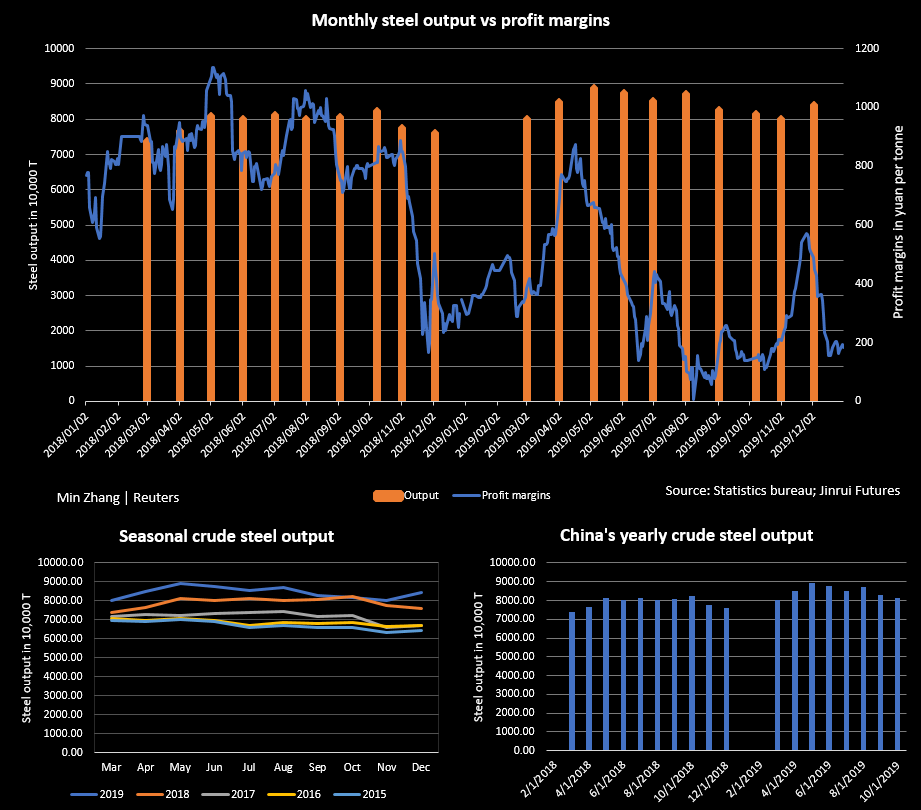Crude steel production in China climbed to a record just shy of 1 billion tonnes in 2019, boosted by a resilient property market and robust demand as Beijing beefed up infrastructure spending in a bid to weather a slowdown in economic growth.FILE PHOTO: A worker checks steel wires at a warehouse in Dalian, Liaoning province, China May 15, 2017. REUTERS/Stringer
The world’s biggest steelmaker churned out 996.34 million tonnes of crude steel in 2019, up 8.3% from 2018’s previous record, data from the National Bureau of Statistics showed on Friday.
In December, China’s steel production surged 12% year-on-year to 84.27 million tonnes, the highest since August, according to the statistics bureau. December’s average daily output was up 1.5% from November at 2.72 million tonnes, according to a Reuters calculation based on official data.
Steel demand in China stayed firm in 2019 despite the world’s second-largest economy coming under pressure from slowing domestic growth and a bitter trade war with the United States.
The property market was more resilient than expected, and a push on infrastructure spending also fueled demand for steel as a vital building material.
Profit margins at steel mills also remained strong enough to encourage greater output, according to analysts.
“Mills did not earn heavily last year but were still profitable,” said Zhao Yu, analyst with Huatai Futures, speaking before the data was released. “As long as there is profit, mills will raise their utilization rates.”
The average capacity utilization rate at 247 major steel firms was 78.99% in the week of Dec. 27, down slightly from the end of November but up from 76.80% at the end of 2018, according to data compiled by Mysteel consultancy.
(Graphic: China’s 2019 crude steel output – here)

The China Iron and Steel Association said last week it expects further growth this year, forecasting Chinese steel demand of about 890 million tonnes for 2020, up 2% from 2019.
It said the pace of growth would slow due to less demand from the automobile and shipping sectors, while new property construction is also expected to slow.